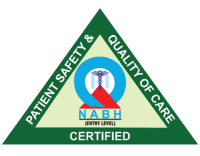Introduction
Spinal cord pain can be a debilitating condition that significantly impacts daily life. The spine, being the central structure supporting the body, plays an important role in maintaining mobility, strength, and overall well-being. When spinal pain occurs, it can affect various aspects of life, from basic movements to sleeping habits and mental health.
Understanding the common causes of spinal cord pain is essential for effective treatment and long-term management. In this article, we will explore the primary causes of spinal pain and provide insights into how to address them effectively.
Understanding Spinal Cord Pain
The vertebrae, discs, muscles, and ligaments that make up the spine, also known as the spinal column, cooperate to support and shield the spinal cord. The term “spinal cord pain” describes discomfort that comes from the spine and is frequently brought on by damage, nerve compression, or degenerative changes. This pain can vary, and it may be localized in one area or radiate to other parts of the body, especially in cases of nerve involvement.
Spinal cord pain can be caused by several factors, including trauma, degenerative diseases, infections, and lifestyle-related issues. The pain can manifest as sharp, dull, or shooting sensations and may be accompanied by other symptoms like numbness, weakness, or tingling.
Common Causes of Spinal Cord Pain
Spinal cord discomfort can result from a number of conditions. These include both acute wounds and long-term illnesses. Let’s examine the most typical reasons:
Disc Herniation
A herniated disc happens when one of the discs—rubbery cushions that sit between the vertebrae—slips out of place. In the affected location, this may result in pain, numbness, and weakness due to pressure on the spinal cord or nerves. The cervical (neck) and lumbar (lower back) regions are where herniated discs most frequently occur.
How to Address It:
- Rest and Modified Activity: Reducing activity that exacerbates pain is essential for recovery.
- Physical Therapy: A well-planned physical therapy programme can reinforce the muscles of the back, thereby further reducing strain on the disc.
- Medications: Anti-inflammatory prescription and over-the-counter pain medicines can be used to control pain.
- Surgery: In some extreme cases, surgery may be required, where the affected disc has to be removed or repaired.
Spinal Stenosis
The spinal stenosis is a narrowing of the spinal canal that may result in compressions of the spinal cord and nerves. This condition generally presents in the lower back or the neck region and is common among the population above the age of 50. The causes are varied but are usually degenerative in origin, such as thickening of the ligaments or formation of spurs of bone.
How to Address It:
- Exercise and Stretching: Stretching activities that are gentle might assist relieve strain on the nerves and spinal cord.
- Pain Management: Nonsteroidal anti-inflammatory drugs (NSAIDs) or steroid injections can reduce inflammation and provide relief.
- Surgical Treatment: In severe cases, surgery such as a laminectomy (removal of part of the vertebra) may be required to relieve pressure.
Spondylolisthesis
Spondylolisthesis occurs when one vertebra slips forward over the vertebra below it. This condition can cause pain by putting pressure on the spinal cord or nerves. It is often caused by degenerative changes, trauma, or congenital defects.
How to Address It:
- Physical Therapy: Strengthening exercises for the core and lower back muscles can help stabilize the spine.
- Pain Relief: NSAIDs and muscle relaxants can ease discomfort.
- Surgery: In cases where the condition is severe and conservative treatments don’t work, surgery, such as spinal fusion, may be necessary.
Osteoarthritis and Degenerative Disc Disease
Osteoarthritis and degenerative disc disease are common age-related conditions that affect the spine. Osteoarthritis involves the breakdown of cartilage between the vertebrae, leading to bone-on-bone friction, Whereas degenerative disc disease is the wearing of spinal discs over time, both conditions often cause aching in the spine by inflammation, compression of nerves, and limited flexibility.
How to Address It:
- Physical Therapy: Low-impact exercises help improve flexibility and strength and reduce pain.
- Medications: Pain relievers, such as acetaminophen and NSAIDs, can help manage symptoms.
- Joint Injections: Injections of corticosteroids can aid in lowering joint inflammation.
- Surgical Options: In more severe cases, joint replacement or spinal fusion may be considered.
Spinal Injuries and Fractures
Traumatic injuries from car crashes, sports-related incidents, or falls, can result in spinal cord injuries or fractures. These injuries can range from mild strains to severe damage to the spinal cord itself. Spinal fractures can cause intense pain and, in some cases, permanent disability.
How to Address It:
- Immediate care is necessary in case of suspected spinal injury to prevent further damage.
- Immobilization through wearing a back brace or using a neck collar can usually stabilize the spine during the healing process.
- Surgery may be necessary for extreme spinal fractures, where alignment and stabilization of the spine are needed.
- Physical therapy is essential to regaining strength and mobility following recuperation.
Infections and Tumors
Infections such as osteomyelitis (bone infection) or discitis (infection of the disc) can lead to spinal cord pain, along with fever and swelling. Spinal tumors, although rare, both can also cause pain by compressing the spinal cord or nerves. Both conditions need prompt medical evaluation and treatment.
How to Address It:
- Antibiotics and antifungal drugs can be used to treat infections.
- If a tumor is identified, surgical removal may be necessary, followed by radiation or chemotherapy (Oncology, General Surgery).
- Pain management is an important component of the treatment for both infections and tumors.
How to Address Spinal Cord Pain Effectively
Managing spinal cord pain effectively involves both short-term relief strategies and long-term preventive measures. Here are some key approaches to addressing spinal pain:
Physical Therapy and Exercise
Physical therapy is one of the most effective non-surgical treatments for spinal cord pain. A physical therapist can create a personalized exercise program that targets muscle strengthening, flexibility, and spinal alignment. Regular exercise helps reduce pressure on the spine, improve posture, and prevent future injury.
People with persistent spinal pain benefit most from low-impact exercises like walking or swimming. Yoga and Pilates classes are also excellent choices for improving core strength and mobility, which can reduce spinal strain.
Pain Relief and Medications
Pain relief medications can help manage spinal pain, especially during acute flare-ups. Over-the-counter options like acetaminophen or NSAIDs can reduce pain and inflammation. For more severe pain, doctors may prescribe stronger medications, such as muscle relaxants, opioid pain relievers, or topical pain creams (Anaesthesiology, General Medicine).
Epidural steroid injections are also commonly used for spinal pain caused by nerve compression, such as in the case of herniated discs or spinal stenosis. These injections can reduce inflammation and provide relief for several weeks or months.
Surgical Treatment
When conservative measures fail, surgery may be required to address the underlying cause of spinal cord pain. Surgical options include:
- Discectomy: Removal of a herniated disc to relieve pressure on the nerves.
- Laminectomy: Removal of part of the vertebra to widen the spinal canal and alleviate pressure.
- Spinal Fusion: Fusing two or more vertebrae together to provide stability in cases of spinal instability.
Usually, surgery is only contemplated after all other options have failed and the pain is seriously impairing quality of life.
Lifestyle Changes
Lifestyle modifications can play a significant role in preventing and managing spinal pain. Maintaining a healthy weight, practicing good posture, and avoiding repetitive strain on the spine can reduce the risk of spinal injuries. Regular exercise is crucial for keeping the spine strong and flexible.
Additionally, ergonomic adjustments at work or home, such as using a supportive chair and desk setup, can help prevent spinal strain.
Conclusion
Spinal cord pain can stem from a variety of causes, ranging from disc herniation and spinal stenosis to fractures and infections. Understanding the root cause of the pain is crucial for effective treatment. While many cases can be managed with physical therapy and pain relief (including through interventions by specialists in Physiotherapy), more severe conditions may require surgical intervention, potentially involving specialists in Orthopaedics, Neurosurgery, or General Surgery.
Taking a proactive approach to spinal health through proper posture, regular exercise, and weight management can prevent or reduce the severity of spinal pain. For those with underlying medical conditions, consulting a General Physician or Neurosciences specialist may help in diagnosis and management. If you experience chronic or severe spinal pain, it’s essential to seek professional medical advice from a relevant specialist, such as Neurology, Orthopaedics, Neurosurgery, or even a Pain Management expert in Anaesthesiology to determine the best course of treatment.
Disclaimer:
The information provided in this blog post is intended for general informational purposes only. It is not a substitute for professional medical advice, diagnosis, or treatment. Always seek the advice of your physician or other qualified healthcare provider with any questions you may have regarding a medical condition. Never disregard professional medical advice or delay in seeking it because of something you have read in this blog.








